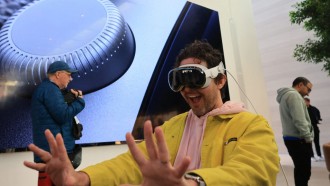At the ongoing Computex trade show in Taiwan, Qualcomm unveiled the new Snapdragon Wear 1100 chips, complementing the Snapdragon Wear 2100 chips that were announced earlier in the year in February.
The Snapdragon Wear 2100 was designed to replace the Snapdragon 400, which was being used for most Android Wear-powered devices. The chipset is 30 percent smaller compared to the Snapdragon 400 and promises to extend the battery life of the wearable devices, as it consumes less power.
The new Snapdragon Wear 1100, on the other hand, while still focused on wearables, was designed for a specific kind of device. While the Snapdragon Wear 2100 aims to power multifunctional smartwatches, the Snapdragon Wear 1100 was created for simpler devices with a targeted function, such as fitness trackers, smartwatches for children and the elderly, smart headsets and other wearable accessories.
The new chipset features improvements in power efficiency while reducing size and offers 3G and LTE connectivity with support for Bluetooth, Wi-Fi and voice commands. The Snapdragon Wear 1100 also utilizes the iZat location engine of Qualcomm to allow wearable devices to continuously display its location and that of its wearer, which is an important function for devices for children.
The Snapdragon Wear 1100, in addition to the Snapdragon Wear 2100, is part of Qualcomm's commitment to move beyond manufacturing just chips for mobile devices and into the wider Internet of Things ecosystem, where ordinary objects are being transformed into smart and connected devices.
The wearable devices market was once seen as a niche market, but sales have continued to rise to push it out of that category. Qualcomm simply could not ignore the massive growth of the industry and so has forayed into the production of chips for wearable devices.
The new chipset is now commercially available and ready for shipping, Qualcomm said, with the company revealing that manufacturers such as WeBandz, Anda Technologies and inWatch will soon announce Snapdragon Wear 1100-powered smartwatches for children.









